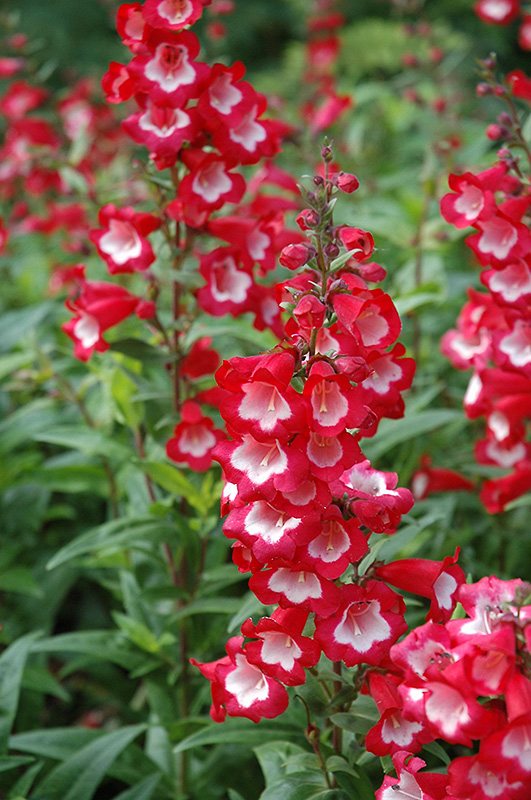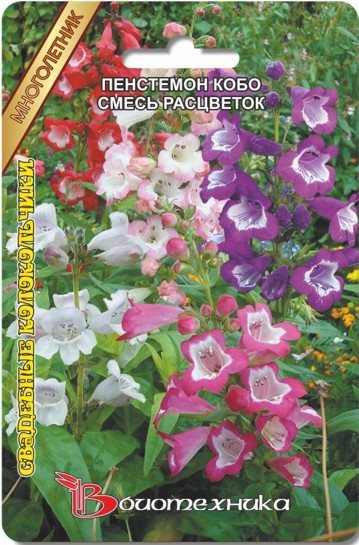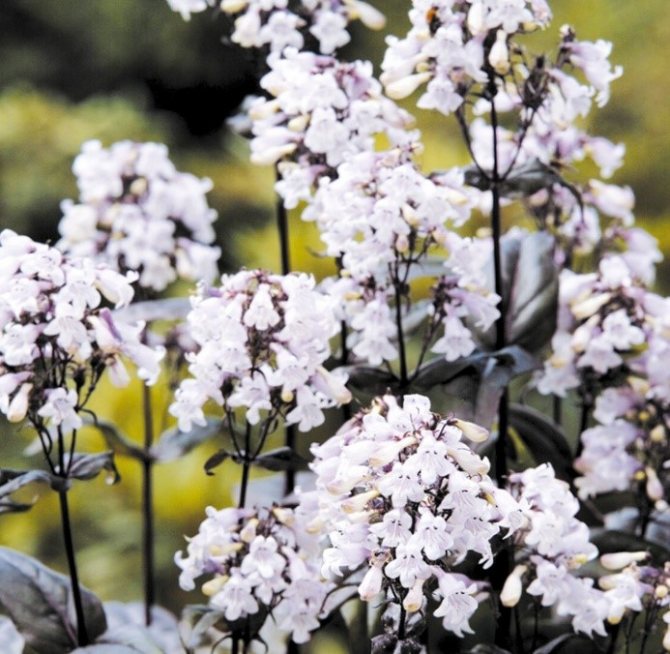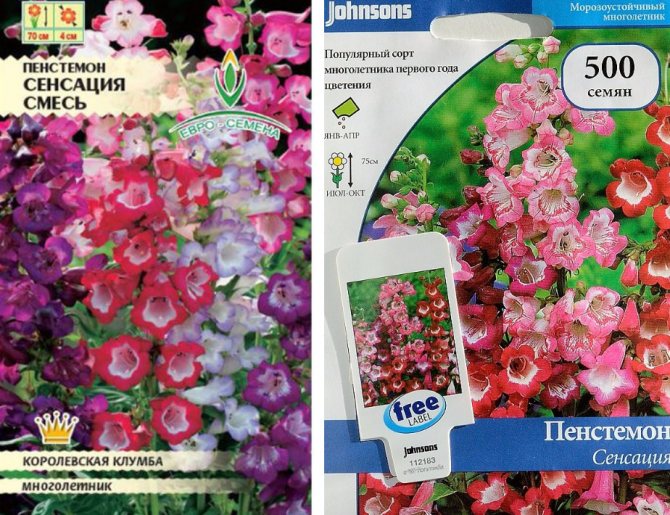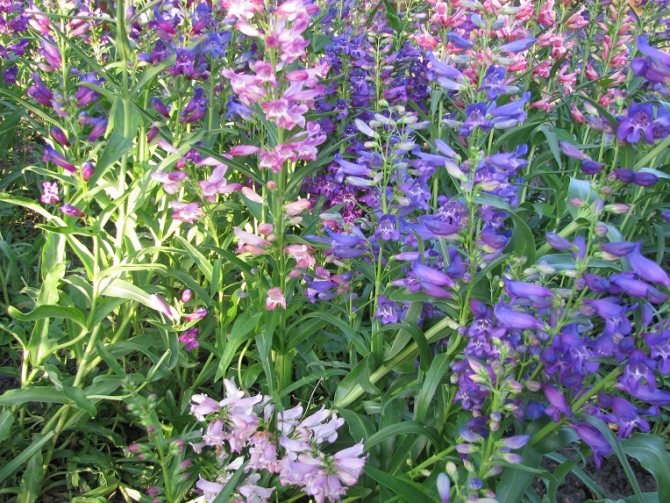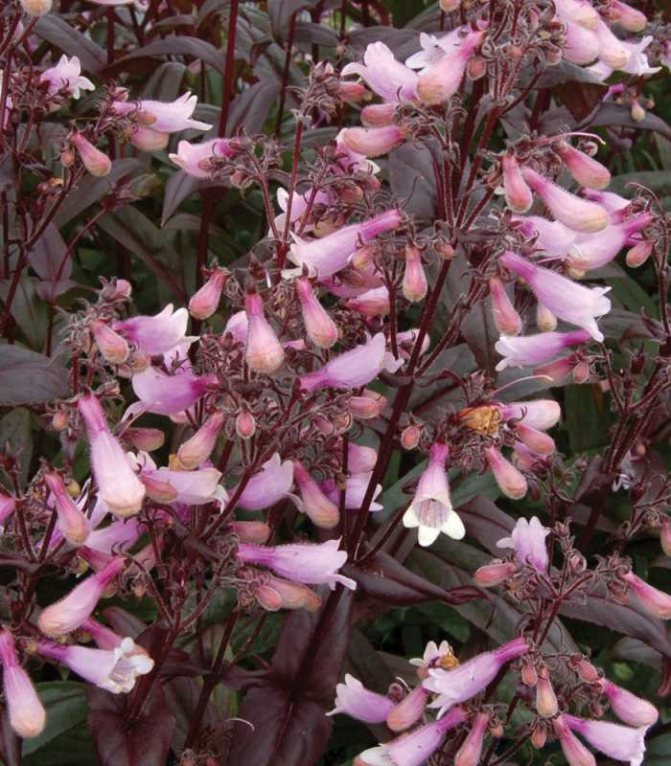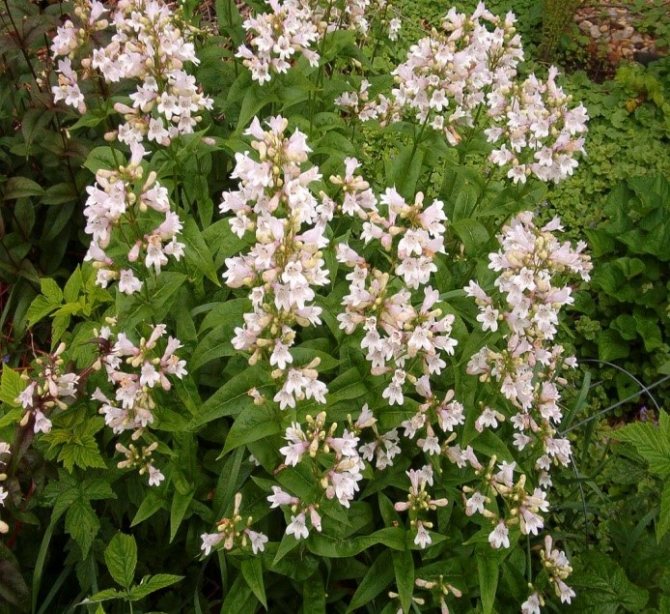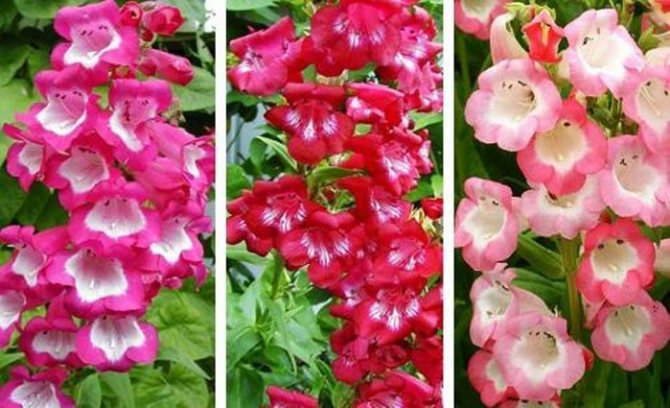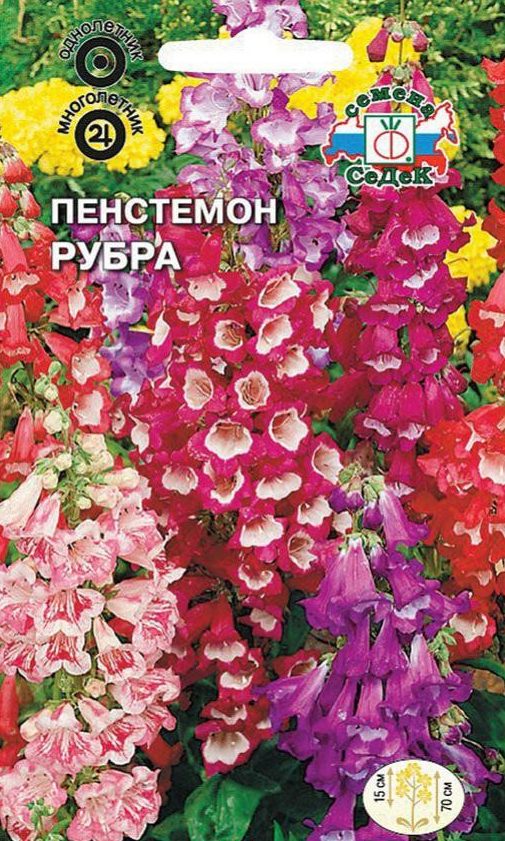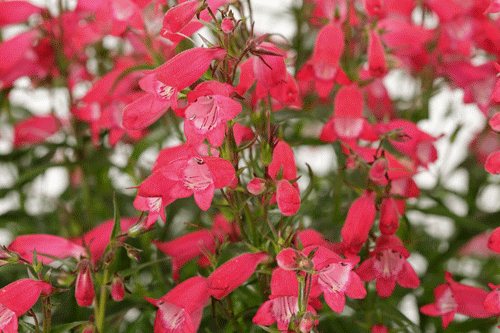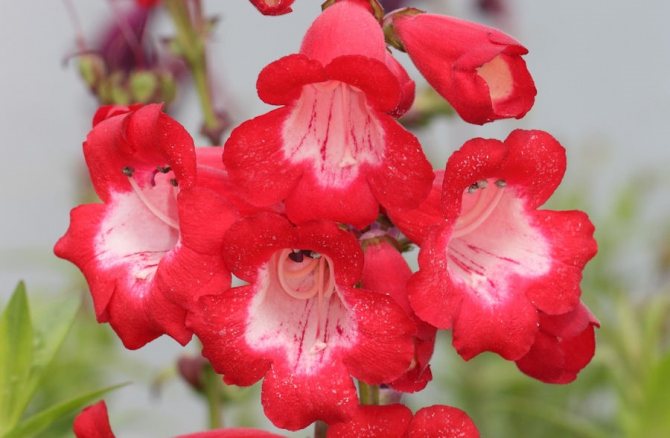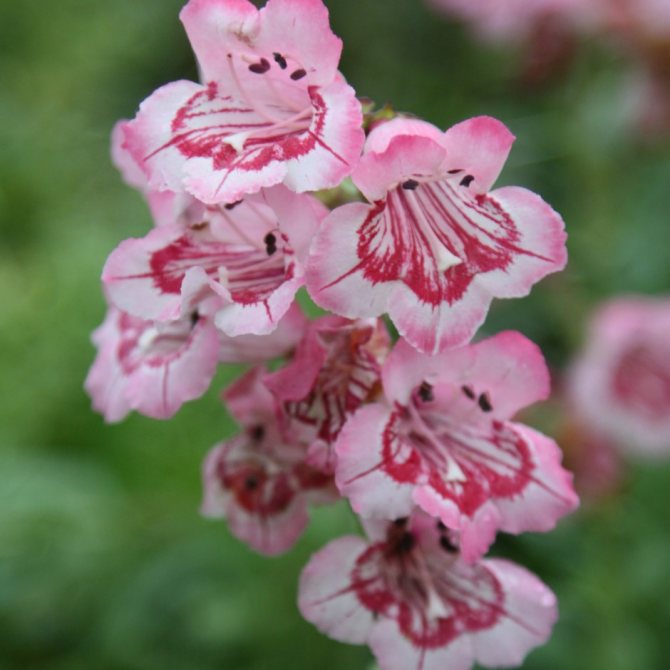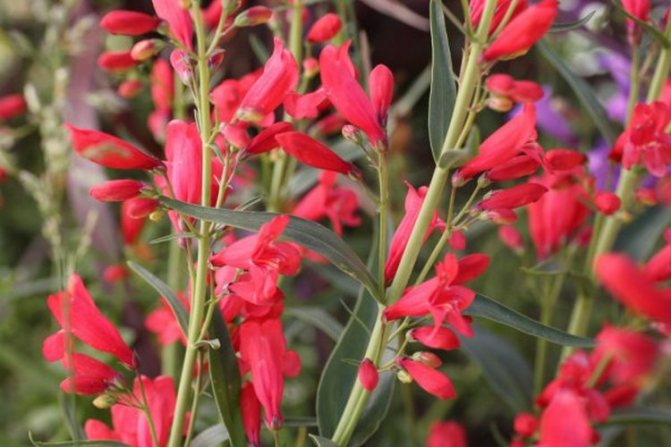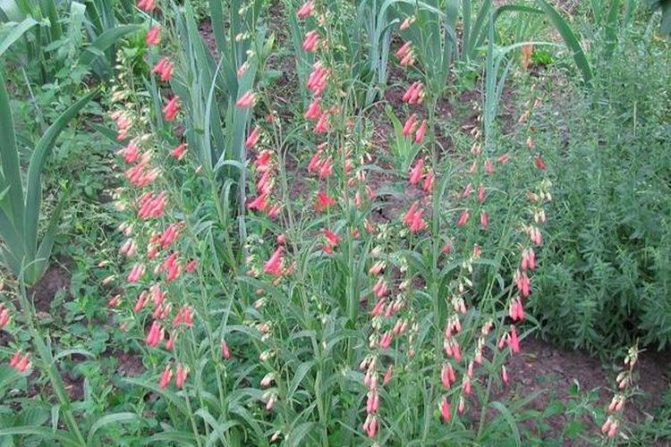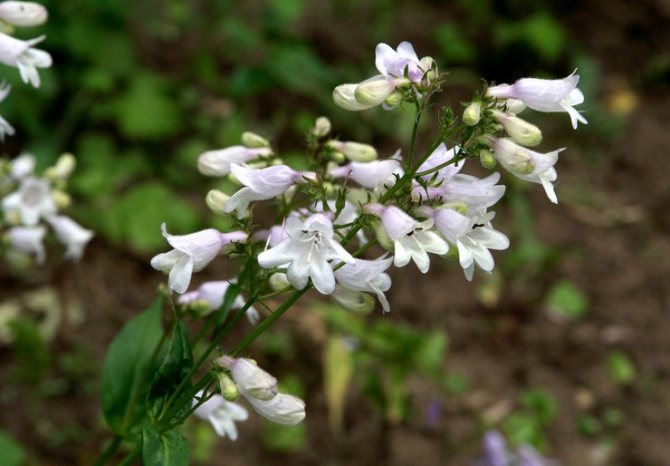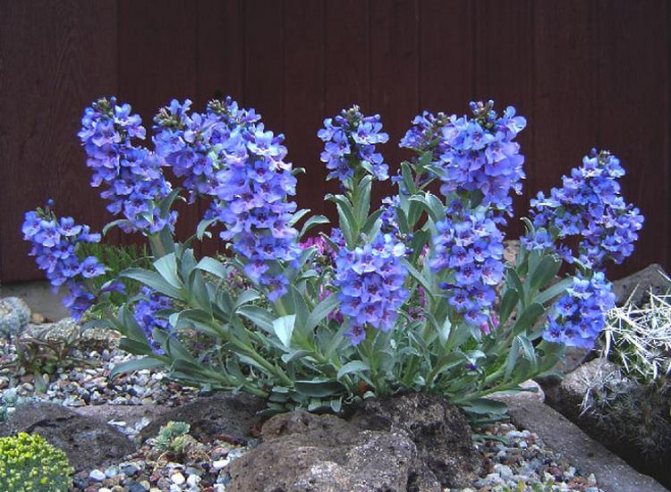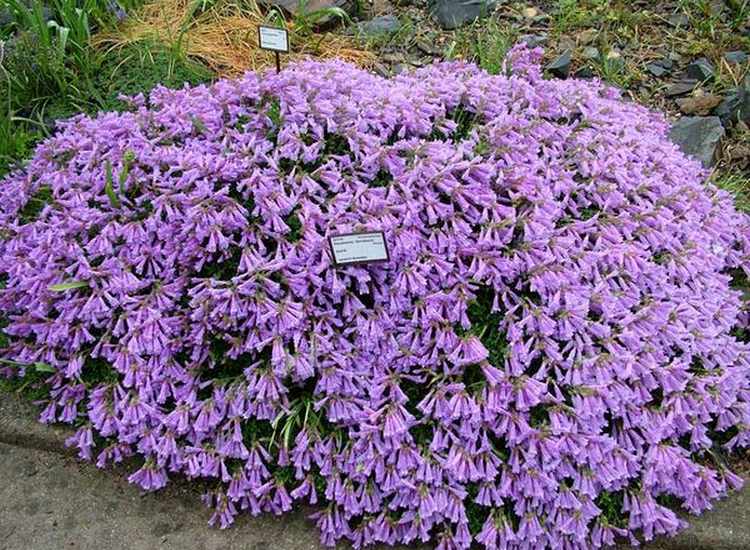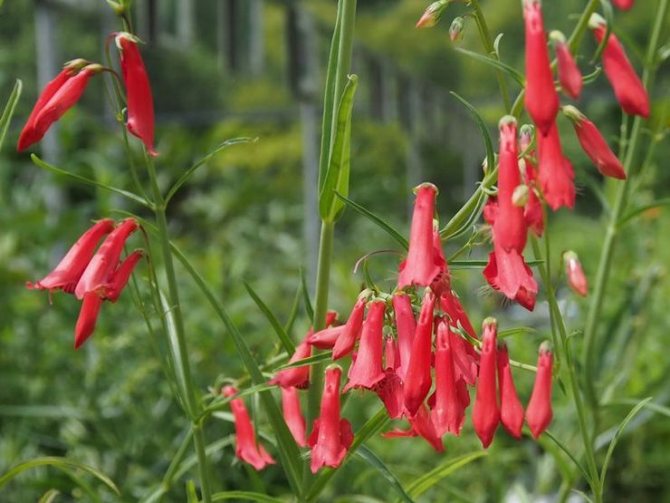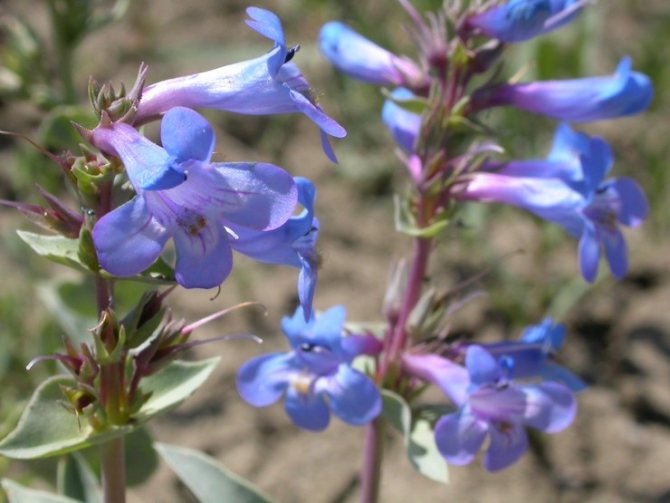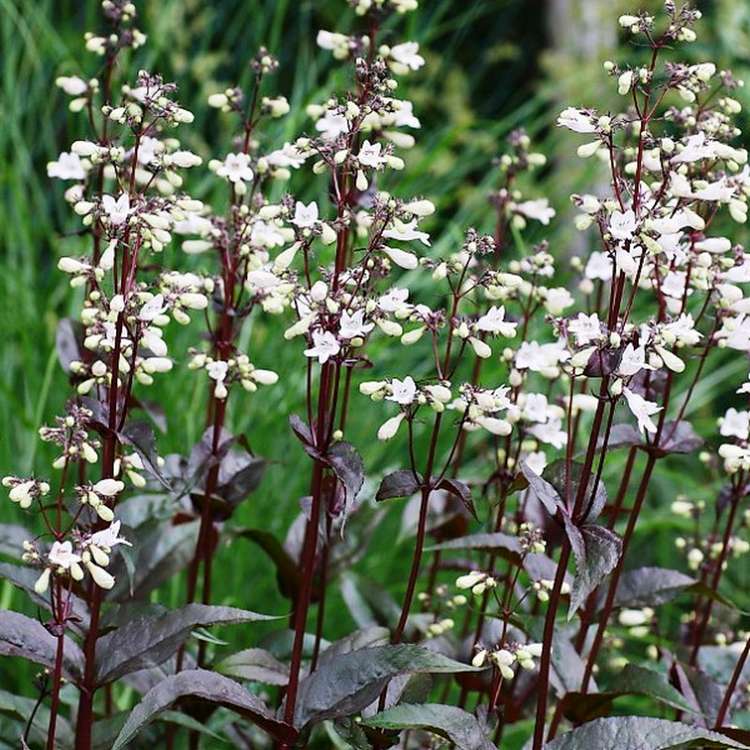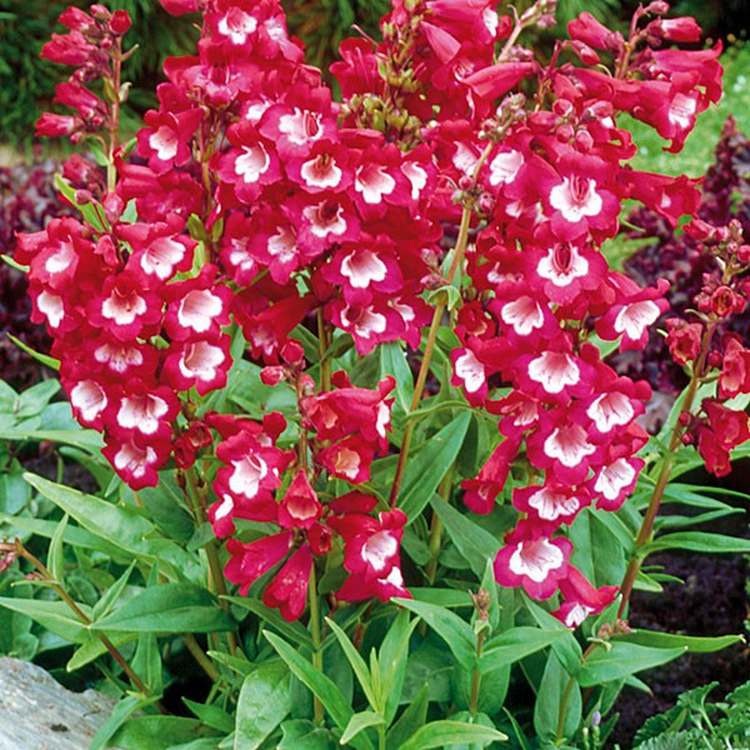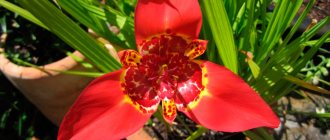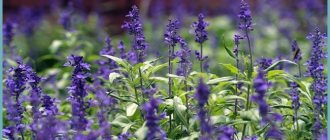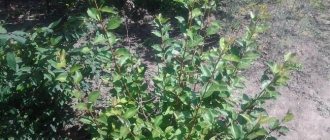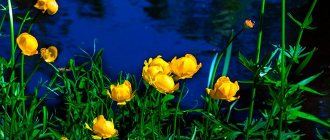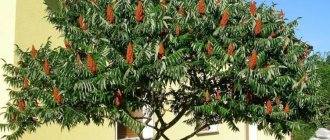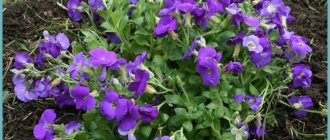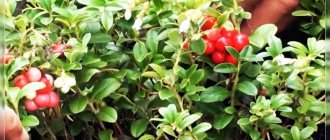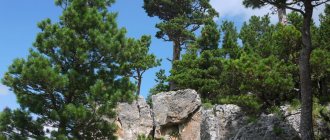Penstemon belongs to the representatives of the flora belonging to the Scrophulariales family. They can grow as annuals or perennials, characterized by a herbaceous, shrub or semi-shrub form. The native area of growth of these plants falls on the territory of both Americas, and only one by one they are found in the eastern regions of Asia and the Far East. The genus itself has more than 250 varieties, but until now, despite such a number in gardening, they are a rarity.
| Family name | Norichnikovye |
| Growing period | Perennial |
| Vegetation form | Herbaceous, shrub or semi-shrub |
| Breeding method | Using seeds or vegetatively (by cuttings, dividing or layering) |
| Landing period in open ground | It is best to plant in spring, when return frosts have passed. |
| Landing rules | Saplings are planted no closer than 35 cm from each other |
| Priming | Well-drained, with coarse sand or small pebbles, light |
| Soil acidity values, pH | 5-6, from slightly acidic and below |
| Lighting degree | South or West exposure, several hours of direct sunlight per day |
| Humidity parameters | Abundant, 2-3 times a week |
| Special care rules | Fertilize only during the period of activation of growth, during the rest period is minimal |
| Height values | 0.2-1.2 m |
| Type of inflorescences | Loose paniculate or racemose, terminal inflorescences |
| Flower color | Pink and red, blue and purple, yellow and white, and cream |
| Flowering time | May June |
| Decorative period | Spring-summer |
| Application in landscape design | Rock gardens, mixborders, large flower beds, for border decoration |
| USDA zone | 4–8 |
The first mention of this representative of the flora is found in the works of the English botanist John Mitchell (1711-1768), which date back to 1748. Subsequently, the famous taxonomist of nature Karl Linnaeus (1707–1778) included it in his published work of 1753 as Chelone pentstemon, changing the spelling. This was done to better convey the idea that the name refers to a kind of fifth stamen (from the Greek word "penta-", five). Mitchell's work was republished in 1769, in which the plant continued to be named by its original spelling, and this later became the basis for the final form, although the term Pentstemon continued to be used in the 20th century.
As mentioned earlier, penstemone can only grow for a year or several years in a row. It has a developed rhizome and upright stems. The number of stems varies from 1 to 4 pieces. Their height can vary within 20–120 cm. Shoots on the surface can have ribs or be rounded. Their color is both bright green and brownish brown. The leaf plates, unfolding in the root zone of the shoots, are also bright green in color, with a solid edge and a glossy surface. A rosette is formed from the leaves, but if they are located on the stem itself, then they go in the opposite order. The foliage is devoid of petioles.
It is characteristic that the buds of penstemon bloom in the period from May to June, which just allows you to decorate the garden in that period when the spring flowers are already peppers, and the summer ones have not yet begun to bloom.An elongated inflorescence appears at the top of the stem, consisting of a small number of buds and therefore loose, with panicle or racemose outlines. Corollas in flowers are characterized by a tubular or bell-shaped shape, while they have a not too pronounced division into two lips. The color of flowers takes either one shade or there can be several of them (the middle of one color scheme, and the edge of another). The petals can often be pink and red, blue and purple, yellow and white, and cream. It happens that the throat of the corolla is characterized by a lighter tone. The flower calyx measures 1.5–2.5 cm in length. From the central part of the flower, staminate filaments, crowned with anthers of a dark color, peep out spectacularly. There is also an ovary.
When the process of pollination in penstemon flowers is completed, the fruits ripen, which look like a box with a pair of valves filled with small seeds. The outlines of the seeds are angular, their surface is covered with a brown skin, characterized by roughness. If we talk about the size of the seed material, it is estimated that there are about 10,000 seeds in 1 gram. They do not lose germination for 2 years.
The plant is easy to care for and, if grown correctly, can become a real decoration of any flower garden, you just have to follow the recommendations below. And since today there are a large variety of both basic species and varieties, every gardener will be able to find one that suits his wishes.
Penstemon: varieties and varieties
If you look at the photo of penstemon, you will notice some resemblance to a bell. There are more than 250 types of penstemone in total. Among them, you can find both erect and ground cover varieties.
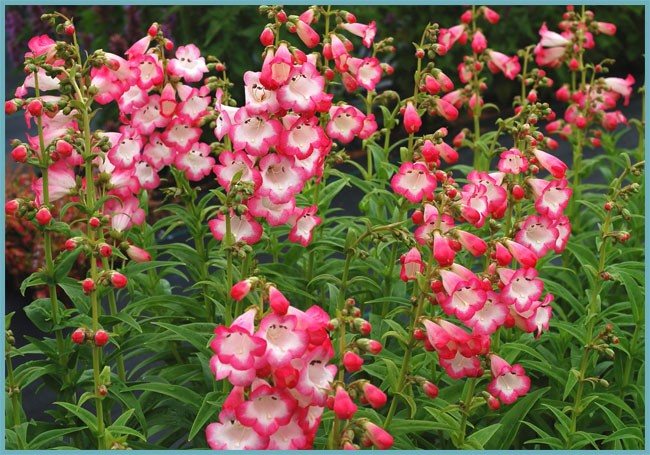
Penstemon is an excellent and unpretentious bell
The beginning of flowering in most varieties falls just in that intermediate period, when the early flowers begin to fade, and the later ones only form buds. It is then that the penstemon flares up with a magnificent fireworks display.
The most common species in our gardens:
- Penstemon alpine... Yellow-lilac flowers with a white throat are collected in umbellate inflorescences and look like a dense pillow.


Penstemon alpine - Penstemon is bearded. This species can grow up to 90 cm in height. Flowers in red and pink tones, like bells.
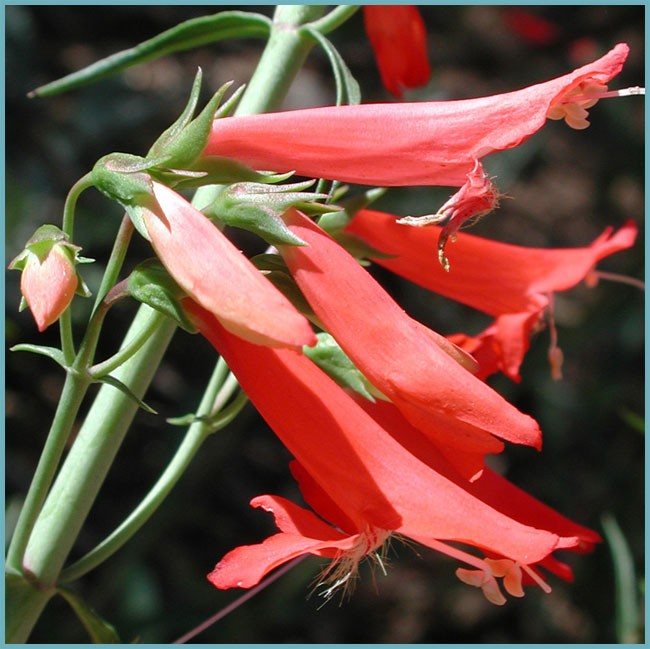

Penstemon the bearded - Bell penstemon... It grows from 60 to 90 cm. Flowers, as the name implies, are similar to bells, pink-lilac tones.


Bell penstemon - Foxglove penstemon... Growth and size does not differ from bell-shaped. The flowers are most often light, white-pink tones.


Foxglove penstemon
The most popular species and varieties
There are more than 250 types of penstemone in total. All of them are very bright and can decorate any personal plot. Many garden plants can boast of a variety of species, but not everyone has so many truly spectacular decorative varieties. In the table below, together with the species, the most common varieties and mixtures are described.
| Penstemon Hartweg
| The flower looks somewhat like a snapdragon. Height about 70 cm. Flowers are very large. They are collected in specific tassels. Colors can be very different, even orangebut, more often, in the middle of the flower white... It blooms for a long time - from early June to the first frost. Grow Hartweg chanson is best from seeds, sowing either at home in early March or in a greenhouse, the main thing is that the soil is sufficiently warmed up. This variety is considered the most popular in the CIS countries. The seeds can be found at any store. |
| Penstemon the bearded (Penstemonbarbatus)
| Height - about 90 cm. On the stem there can be podvoenny and triplet inflorescences. Flowers small, mostly red, pink or purple. The plant usually blooms in May - early June. |
| Penstemon Cobo
| A very tall plant with large leaves and stems. Flowers of combined colors. |
| Foxglove
| It can reach a height of 120 cm. It is an evergreen, so it will decorate the site even in winter. The stems can curl. Flowers of different shades (pink or blue), but inside is always white. Blooms in June and early July. Penstimon mystic loves clay and acidic soils, does not like overflow, prefers sunny places. The color of the leaves is green-purple, the flowers are pale pink. |
| Penstemon sensation
| The flower is undersized, up to 45 cm high. The leaves are sharp, bright green, the flowers are always two-colored, long. There can be blue-white, white-red shades. |
| Hybrid Anthony
| A very spectacular bushy annual plant, which can reach a height of 80 cm. |
| Penstemon scarlett queen (scarletQueen)
| A classic plant with a rich purple hue in flowers and bright green in the leaves. |
| Davidson (davidsonii) | A perennial plant, up to 30 cm high. Creeping, flowers of a blue and delicate lilac shade. |
| Penstemon dark towers (dark towers)
| A modern and improved variety (derived from Husker Red or Hasker Red), with increased frost resistance, susceptible to pruning and blooming for a long time. The leaves of the plant are of a deep burgundy hue and are in perfect harmony with pale pink flowers. |
| Xasker ed (huskers red)
| Height - about 70 cm. Leaves - green-brown, flowers - white-pink. If this plant is planted in partial shade, then the leaf will be a rich green color. Prefers well-drained soil, loves sunlight. It blooms from May to October, with pruning and fine weather it can bloom longer. |
| Penstemon rubra
| Another fairly popular mix variety. Tall plant with bright tubular flowers (shades are mainly red, pink, burgundy, lilac). |
| Penstemon carillo purpli (CarilloPurple)
| Tall (up to 60 cm) plant. Leaves and stems are green, flowers in all shades of purple and purple. Blooms from July to October. |
| Penstemon carillo ed (CarilloRed)
| The variety is similar to the previous one, only the flowers are more saturated scarlet colors. |
| Penstemon hybrid A generic name for many hybrid forms, for example, in the photo below, the foreign hybrid variety 'Hidcote Pink'
| Height - 75 cm. Shades can be any, but inside the flower the shade is always lighter. The leaves are bright green, ovoid. Penstemon blooms from May to October. |
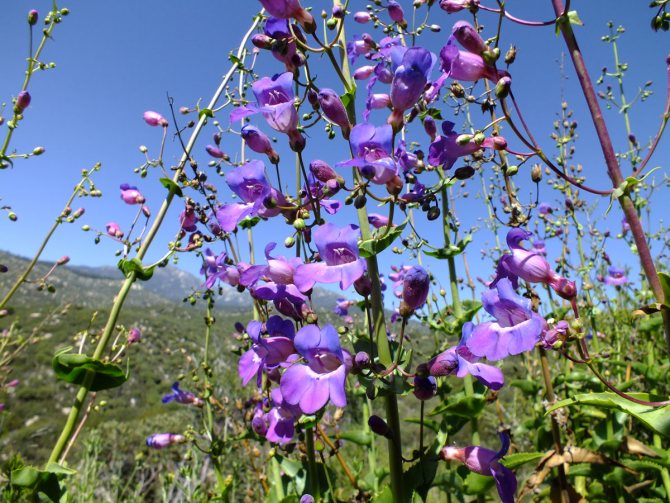

Penstemon spectabilis
There are also types such as
- whitish penstemon (planted in rocky ground);
- brilliant penstemon (the most frost-resistant variety);
- pine-leaved penstemon (this species feels good at home);
- alpine penstemon (able to reduce the number of weeds in the garden);
- penstemon is harsh-haired (absolutely unpretentious appearance, has increased frost resistance, therefore it does not need a winter covering);
- sprawling or serrate-leaved penstemon (one of the most popular plants in the USA and England);
- penstemon azure (annual plant of the brightest, most saturated colors).


Penstemon bearded - Penstemon barbatus
Planting a plant
Penstemon loves sunlight, so try to find an area that is sufficiently lit for it, but at the same time, you should avoid areas that are too windy. The soil is preferable light, well-drained.
Seedlings are first grown from penstemon seeds. In February-March, seeds are sown without deepening into the ground, because they need sunlight for germination. Some species are best sown for the winter.
Advice.For better seed germination, stratification can be carried out.
The soil for sowing must be sufficiently moist. After the seeds have been sown, they must be covered with a thin layer of sand, previously disinfected with boiling water. Crops should be covered with foil or glass.


Light soil and wind protection are essential for plant comfort
After two weeks, the first shoots of penstemon should appear. This will happen if you adhere to a temperature regime of 18-24 ° C. It is better to dive seedlings into peat pots when two leaves appear on each plant. At the end of May, flowers can be planted outdoors. It should be remembered: the earlier you plant young plants, the later they will bloom.
In addition to the seedling method, you can sow seeds directly into the open ground. As in the case of other perennial plants, this must be done in the spring, when the danger of frost has already passed, or in late autumn.
2.Penstemon - planting and leaving
2.1 Reproduction - growing from seeds
Half-ripe stem cuttings 8-10 cm long in late spring and summer. Rooting can be done in plain water. Seeds sown in spring. Penstemon seeds need light in order to germinate, so just press them lightly into the soil without covering them up. Germination depends on the freshness of the seeds. Plants obtained from seeds harvested at home may not inherit the beauty of their parents. Germination takes about 1 to 2 weeks. By dividing large plants when transplanting.
↑ Up,
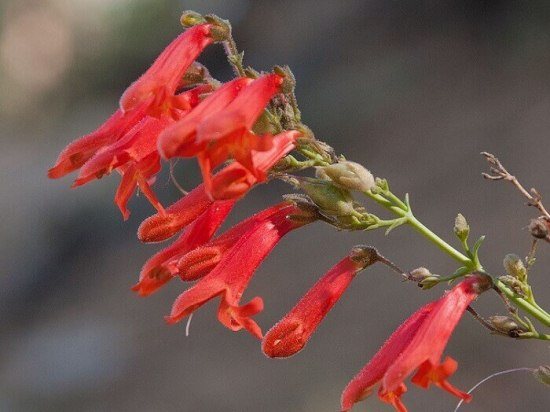

2.2 transplant penstemon
Penstemon is often grown as an annual plant and does not need transplants. When grown as a perennial, a transplant is carried out every 3 years, in the spring, with the beginning of a new growth.
↑ Up,
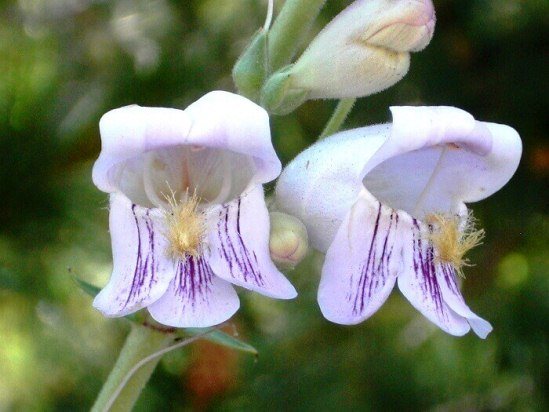

2.3 Flowering time
Spring. Re-flowering occurs in autumn.
↑ Up,
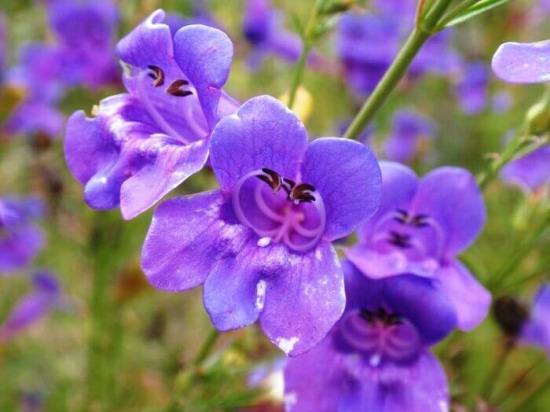

2.4 Growing, pruning
To extend the flowering period, promptly remove faded penstemon buds. After flowering, shoots with withered flowers are removed for the onset of re-flowering.
↑ Up,
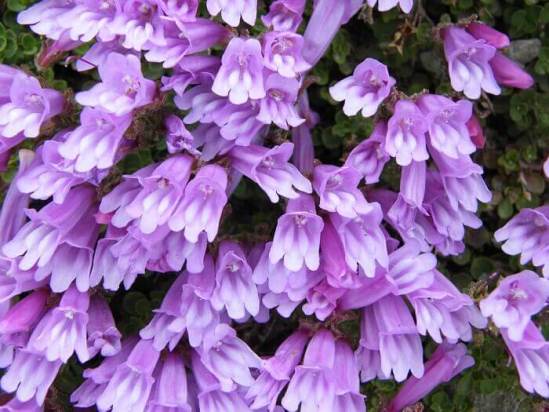

2.5 Diseases and pests of penstemon
An excess of nutrients in the soil leads to an abundant build-up of green mass to the detriment of flowering. Penstemones can rot when moisture stagnates at the roots. Harmful insects do not disturb the flower.
↑ Up,
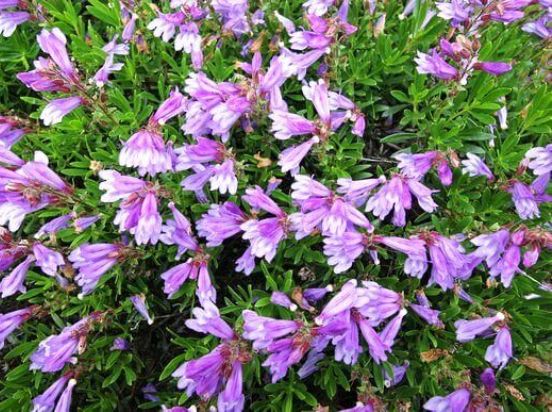

2.6 Temperature
Normal room temperature is suitable for growing penstemon from spring to fall. In winter, keep it cool no higher than 15 ° C. Plants tolerate frosts down to -10 ° C if they are kept in dry soil.
↑ Up,


2.7 Lighting
Bell penstemon prefers a brightly lit place with direct sunlight on the plant in the morning and evening. It can be grown for a long time in partial shade, but under such conditions it will become elongated and weak.
↑ Up,
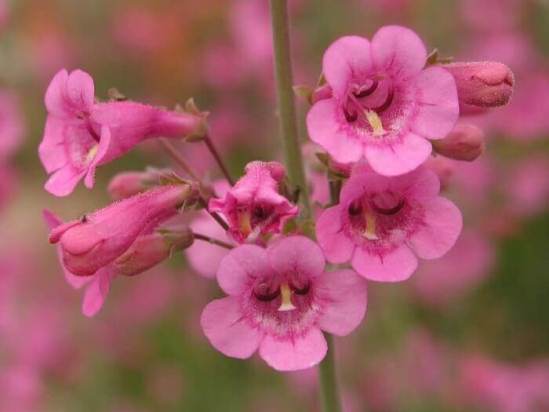

2.8 Soil
This plant should be grown in fertile, organic-rich soil that is moist but well-drained. Penstemon prefers soil with a slightly acidic pH - about 6.0 - 6.5.
↑ Up,


2.9 Fertilizer
During the growing season, every 2 weeks. With an excess of nutrients, the plant abundantly grows green mass to the detriment of flowering, penstemon becomes elongated and disheveled. Before forming flower buds, use a fertilizer with a high phosphorus content.
↑ Up,
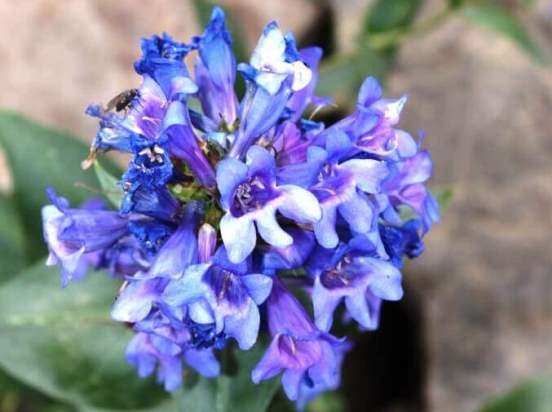

2.10 Watering
Penstemon needs regular watering, but make sure that the water does not stagnate in the sump. The plant must have good drainage. Let the soil dry between waterings to a depth of about 5 cm.
↑ Up,
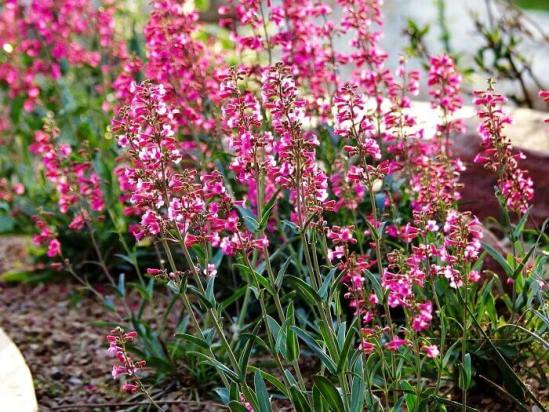

2.11 Spraying
Spray periodically. Place the penstemone in a constantly ventilated area with good air circulation.
↑ Up,


2.12 Purpose
It is often used in landscaping loggias, terraces and balconies.Penstemon flowers do not lose their freshness for a long time when cut.
Note.
Hydroponics.
Plant care
Caring for penstemons does not take long. These plants, although they require careful attitude, are not at all fastidious. The main thing to take care of is drainage. Do not let the water stagnate near the roots of the plant, because this will cause much more damage to the flower than frost in winter. Watering the crop should be done regularly, especially in dry times. Do not let the roots dry out. Regular mulching around the perennial roots is an ideal solution to moisture problems.
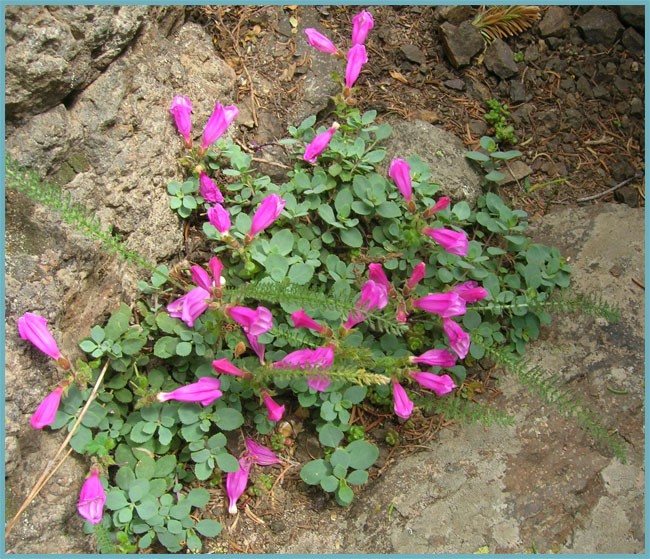

It is very important that water does not stagnate at the roots of the plant.
Remember to remove dried plant parts and loosen the soil around the bushes.
Before frosts, the ground part of the bushes is cut off and covered with spruce branches or leaves.
How to deal with pests and diseases when caring for penstemon?


Despite the fact that the plant is distinguished by strong immunity, it is possible that it is affected by fungal diseases. This occurs in cases where the planting was carried out on a damp and swampy area or the irrigation regime was regularly violated. Such diseases are:
- Powdery mildew
- in this case, the symptoms are a whitish coating on the leaves and their subsequent yellowing and wilting. - Rust
- the disease is manifested by the formation of spots of a brownish shade, which have the peculiarity of growing over the entire leaf. - Leaf spot
- the formation of spots of various shapes and colors also takes place, while the foliage will certainly be shed.
It is recommended to immediately remove the infected shoot, and treat nearby bushes with fungicidal preparations, such as Bordeaux liquid or Fundazol. If everything went right, then in the near future it will be possible to see new young and healthy stems from the soil. Often, with fungal diseases on the tops of the shoots, drying begins, this can also serve as a symptom of a lack of moisture and drought.
It is curious that harmful insects are not at all interested in the plant and will not have to be dealt with. But the leaves can gnaw off gastropods such as slugs or snails. The fight against them consists in the manual collection of pests or the use of a drug, like Meta-Thunderstorm.
Breeding penstemon
Penstemon can be propagated in four ways:
- Seeds. This method has already been described above.
- By dividing the bush. To do this, the bush must be dug out, carefully shaken off the roots from the ground and divided into several parts. Plant each part at a distance of at least 35 cm from each other.
- Cuttings. Cuttings must be cut from non-flowering shoots and stuck into the ground in a shaded place. It is best to cover the cuttings on top with a cut plastic bottle or glass jar. Cuttings take root very well if they have enough moisture.
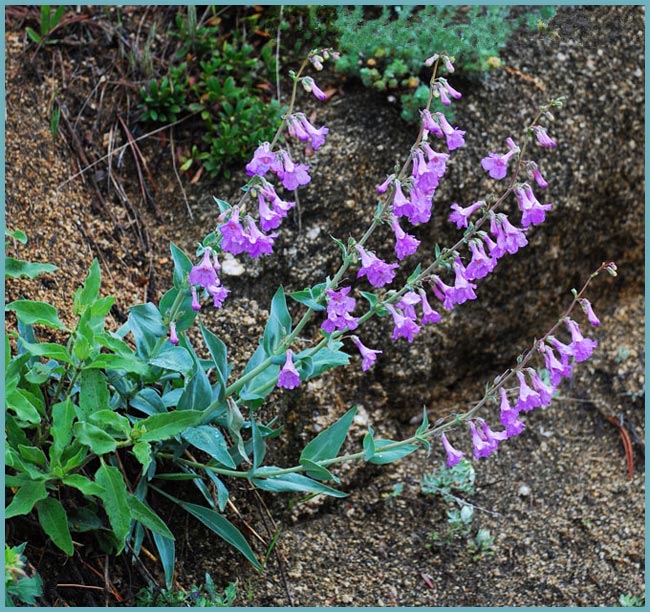

The culture is easily propagated by dividing the bush, and by cuttings, and by layering - Layers. In spring, reject young shoots from the rest of the bush and cover the gap with earth. When the shoots are rooted, carefully separate them from the mother bush and transplant to the desired location.
Advice. Although penstemon is considered a perennial plant, it must be renewed every 3-4 years, otherwise the shoots become thin and the flowers are not so lush.
Penstemon: plant description


Perennial has a rod-type root system. The bush consists of 1-4 erect stems, which grow from 20 to 120 cm. The ribbed surface of the rounded shoots has a juicy green or dark brown color. Shiny, elongated leaves with a pointed edge are oppositely arranged. They are collected in a root rosette and do not have petioles.
Penstemon begins to bloom in May. Until the end of June, oblong panicles of future inflorescences with tubular corollas appear on the stems. Petals of small flowers have a characteristic slightly forked shape.Several thin stamens and ovaries peep out from the center of the oblong calyx 1.5-2.5 cm long. One or more shades are typical for each bud. The color of the petals can be very diverse: burgundy, scarlet, blue, lilac, lilac, beige, yellow or white. Zev is lighter in color.
The pollinated flower, after ripening, forms a polyspermous capsule, in the middle of which there are small, ribbed seeds. They are covered with a tough brown skin. 1 g of seed can contain approximately 10,000 units. They are able to maintain their germination for a couple of years.
Penstemon in landscape design
Penstemon is quite capricious and may not get along with some other flowers in your garden, so gardeners advise you to plant it away and give enough free space for development.


Penstemon will make your garden light and bright
Different varieties of this flower find their application in landscape design. The rich tones of alpine penstemone, which forms a flowering cover, are most often used in rock gardens as a ground cover. In addition, it will look good in border plantings.
This bearded penstemon in landscape design is used for planting in flower beds and flower beds. He looks no worse in solo landings.
The light pink flowers of the tall foxglove penstemon are in demand in combination with flowers such as chamomile, coreopsis, as well as ornamental sedge and astilbe.
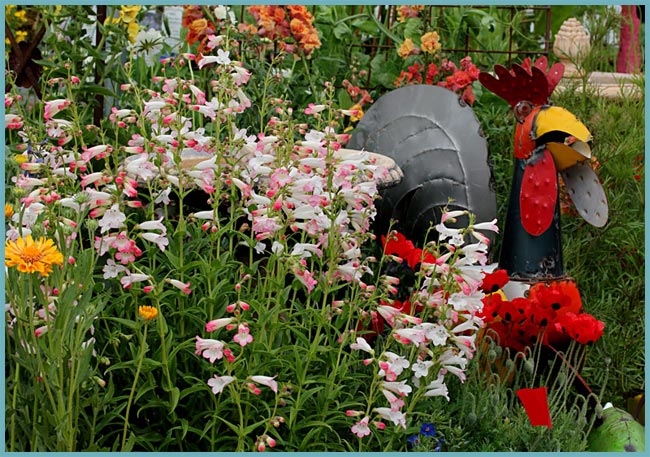

Penstemon with other plants
You can also arrange a bed of penstemons alone, choosing varieties in such a way that the multi-colored fireworks last all summer until autumn.
Penstemon, planting and caring for which is easier than it might seem at first glance, looks great in bouquets, although it does not last long.
This rare guest in the gardens is worthy of attention. He is moderately capricious, easily reproduces, he feels good in a temperate climate. Any sort of penstemone will find a worthy place in your garden. Do not be afraid to fantasize and your garden will acquire new colors, and penstemon will help you with this.
Growing seedlings
In order to grow penstemone, you will have to make an effort and be patient.
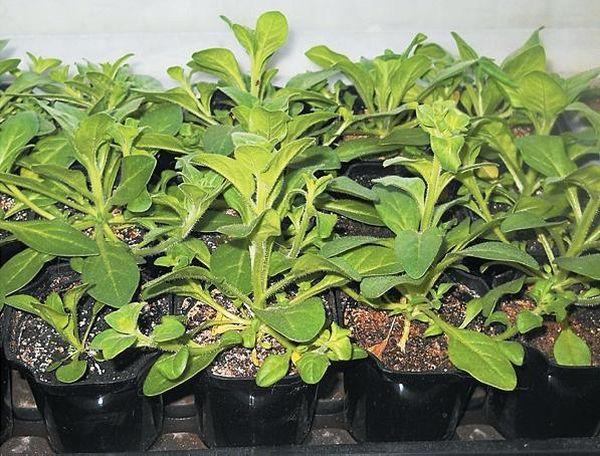

Timing
The most suitable period for sowing seeds for seedlings is the end of February - beginning of March.
Soil preparation
The soil for sowing seeds should be light, nutritious and well-drained. Sow the seed into slightly damp soil.
How to plant
The containers are filled with soil and future seedlings are sown in them. Sprinkle on top with a thin layer of disinfected sand. To do this, it is enough to spill it with boiling water.
It is not worth deeply deepening the seeds, this will reduce their germination.
From above, the containers are covered with polyethylene or glass to create a greenhouse. Place in a warm, bright place.
Watering
It is important that the soil does not dry out, otherwise the seeds will not germinate well or not at the same time. From time to time, the seedlings are opened, aired and sprayed with a spray bottle. The germination process takes 1 to 3 weeks, depending on the penstemona variety.
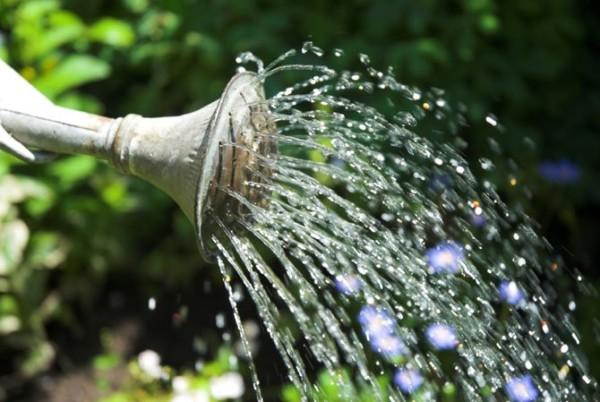

Picking
After 10-15 days, the shoots have already formed 2-3 true leaves. This means that they need to be dived into separate containers with peat.
Transfer
Already grown plants are transplanted into open ground. This process takes place at the end of May. The site must be sunny and free of drafts.
Important! The sooner the penstemone is planted in open ground, the later it will begin to bloom.
Compost, peat or sand are added to the dug holes, and fine gravel is also used. When planting seedlings, a distance between plants of 30-35 cm should be observed.
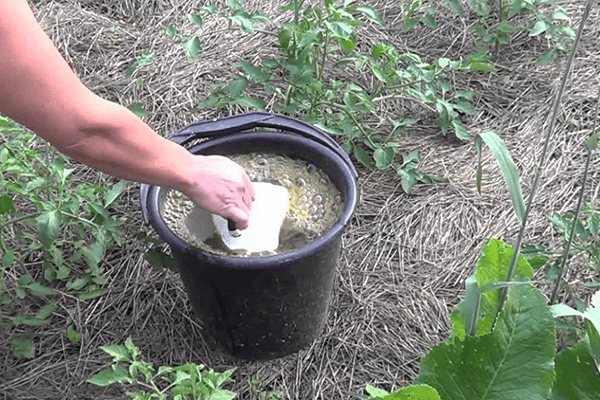

Mulching
The soil around the flowers can be mulched to reduce the amount of watering. For this, dry peat or compost is used.
Top dressing
As a top dressing, organic fertilizers are applied under the bush.This is done 3 times per season. And before the plant begins to bloom, it is fed with complex mineral fertilizers that contain phosphorus. Such feeding has a positive effect on flowering, enhancing it and making the bush more decorative.
Bloom
The flowering period for each variety comes at different times, but most often it is June. This process continues until the end of summer, and in some varieties, up to the first frost. The beginning of flowering is influenced not only by the variety, but also by the time of planting, the soil in which the flower grows, and its care. After the plant has faded, seeds begin to form, which are used for reproduction.
See also
Description of varieties and types of terry aquilegia, planting and care rulesRead
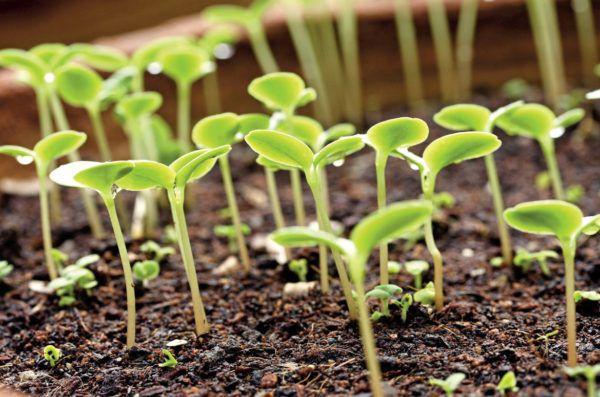

Pruning
During the development of the flower, pruning should be carried out periodically. Withered inflorescences and foliage are cut off. They also thin out overgrown bushes. This will increase the decorative effect of the plant and extend the flowering period.
Preparing for winter
Winter frosts below -10 degrees for most of the penstemon varieties can be adversely affected. In order to preserve the plants, after the end of flowering, their stems are cut to the root and insulated with dry foliage or spruce branches.
Diseases and pests
Penstemones are resistant to diseases, but if the plant is systematically flooded or water stagnates under the bushes for a long time, fungal diseases, in particular gray rot, can develop. In order to cure the plant, the soil under the bush is loosened and watered with fungicides.


Drying of the top of the plant sometimes occurs. In order to get rid of this problem, you need to completely cut the bush. Without doing this, you can lose the plant. When pruned, the penstemon will quickly recover and sprout new shoots.
For insects, this flower is not of interest, so they rarely attack it.
Types of penstemon: photo
Reproduction methods
This plant is best grown from seed.
This requires:
The best place to land is sunny, but sheltered from the wind.
Remember: growing will be more difficult if the penstemon does not have enough sun, it will be paler than usual or not bloom at all, so you should be careful when choosing a planting site.
The soil is black soil, the soil must be well-drained. The distance between plants is 35 cm (the plant does not like tightness, so it should be provided with as much free space as possible).
Penstemon requires good watering, especially during a period when it is very hot and dry.
Also, the plant is very fond of loosening, this makes it possible for the roots not to dry out and not to dry out. It is imperative to remove weeds.
Penstemon loves pruning and is best done in the spring.
Do not fertilize penstemone. This will result in abundant foliage rather than color. Compost can be placed under the plants in spring and autumn. For the winter, the plant must be wrapped with a special protective material or strengthened with spruce branches. In one place the plant can be up to four years. In general, caring for a penstemon is not very difficult.
You can also use the root propagation method. To do this, you must use the roots of plants that have reached the age of three to five years.
Penstemon digitalis, Penstemon digitalis, cultivar ‘Husker Red’
Gardening experts also use a breeding method such as grafting
... The top is cut off from the plant, put in water, until roots are formed (it is best to add water to a special solution that will stimulate the emergence of roots). Cuttings are planted in open ground around mid-summer in order to form stable shoots.
You can also resort to such a breeding method as layering
... To do this, it is necessary to sprinkle a part of the stem of the main plant with soil, wait for the formation of stable roots and separate the plant from the "mother" one.After a while, the plant will need to be transplanted further away, since penstemons do not like crowding.
Penstemones look great on alpine slides as the dominant plant. They perfectly coexist with such plants as:
- corydalis;
- narcissus;
- decorative sedge,
- hyssop,
- chamomile.
This plant is used as a curb or ground cover. It is quite possible to make mixes of different types of this flower. It looks very beautiful on the flower beds.
Penstemon heterophyllus, cultivar Blue Springs, is planted in the border between the escholzia.
Luxurious border with hybrid penstemon.
Penstemon is also beautiful in a slightly wild, truly English flower beds.
Penstemon eatonii in its homeland of Southern California, Arizona.
It is possible to grow penstemon at home. It looks best on the balcony in tall pots.
Penstemon hartwegii
Penstemon: care and reproduction
As it grows, the plant needs regular watering, mulching (to retain moisture in hot weather), and weeding. Complex fertilizers are suitable for feeding. It is enough to make 2 times a month. During the growth process, the top of the plant may dry out. In such a situation, you need to cut out the damaged area or cut the entire plant. Young shoots will not keep you waiting. Do not be afraid of excessive dropping of flowers. Soon, new beautiful flowers will grow in their place.
Penstemon is a large genus of flowering plants from North America and East Asia. Only one single species is represented on the territory of Russia, in the Far East - P. Frutescens. Previously, botanists assigned it to the Norichnikov family, but thanks to the latest genetic research, it was placed in a new, more extensive group of the Plantaginaceae family.
One of the Asiatic species, previously placed in the genus Penstemon, has now been isolated as a separate genus Penneliant. This makes the penstemone flower a mostly Nearctic genus with several neotropical species. Although the plant is widespread throughout North America and inhabits areas ranging from open desert to humid forests and alpine zones, as a rule, they are usually not the same within their distribution range.
Native Americans use penstemone as a medicinal plant for humans and animals. John Mitchell published the first scientific description of a flower in 1748, although he only named it Penstemon, at this stage in the development of science we can already define it as Penstemon Levigatus. Subsequently, Karl Linnaeus included it in his list of one of 1,753 publications as chelone pentstemon, changing the spelling to more closely match the name, which mentions the unusual fifth stamen (translated from Greek "penta-" - five). After some time, Mitchell's work was published with the preservation of the author's spelling and, ultimately, the form of spelling was adopted as the official one.
Penstemon seeds in Europe first began to be sold only in the 19th century, over time, many flower hybrids were developed in this region.
Main varieties
For growing on your own plot, you can choose the most suitable type of penstemon. These plants do not require special care, although you still have to create the necessary conditions for them.... Here are the most popular types:
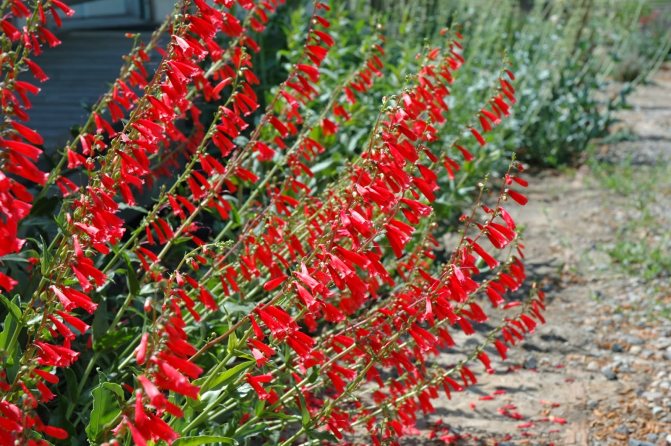

Bearded Penstemon is a plant up to 90 centimeters high with a strong straight stem and hard leaves. Penstemon flowers can have different shades: most often they are red, but there are forms with blue, pink, white, reddish buds. It blooms for up to three months, the flowering period begins in mid-June. There are also varietal variants of this plant - Cambridge and Rondo. They are relatively low - up to 40-50 centimeters - and bloom early and abundantly.- Penstemon Cobo is a spectacular plant with flowers up to five centimeters long in lilac, pink or white.Usually has no leaves at the roots, as they dry out easily. It blooms in the second year after planting, the flowering period is in May. Since his homeland is the prairies of North America, the best soil for him will be sandy, rich in limestone or loamy.
- Penstemon Rubra is a hybrid penstemon variety that is popular among lovers of this plant species. It is an annual plant with a height of forty to seventy centimeters. It has long tubular flowers of bright colors: red, white, pink, purple.
- Penstemon Hartweg is a plant that reaches seventy centimeters in height with inflorescences of juicy red shades, most often white in the middle. It blooms for a long time, from mid-summer to mid-autumn. It is considered the most popular variety for breeding in the CIS. If desired, its seeds can be easily purchased at any store. Its variety Chanson is widely known, saturated with a more diverse range of colors - from pink to purple.
- Penstemon Davidson - one might say, a dwarf plant: it spreads along the ground and reaches ten centimeters in height. In nature, it grows in the highlands of the USA and Canada. This is a perennial flower with small inflorescences, consisting of small buds of a red-purple hue. Able to hibernate under a thick layer of snow, it must be protected from dampness for the winter.
- Bush Penstemon is a shrub native to North America in height up to forty centimeters. Withstands frost well, begins flowering in spring. Its flowers have a delicate white-lilac shade.
Landing
Penstemon is quite unpretentious, but to achieve the most decorative look, it is best to plant it in areas with bright sunlight. In partial shade and shade, the flower is able to develop, but due to a lack of light, the color of the inflorescences can be several tones paler than that of the same variety grown in the sun.
The main condition for successful maintenance in the garden is the correct choice of soil for planting, which should be light and nutritious. It is necessary to provide good drainage, eliminate stagnation of water in the ground and protect the plant from drafts.
Organic fertilizers such as humus or are optimal for use as top dressing. It is better to introduce them in the spring before the plant blooms.
Description of penstemon and a photo of the flower in various angles
Penstemon is a herbaceous perennial that forms a spear shape with leaves and thorns on tubular flowers. The flowers of the plant are usually pink, red, white, purple and occasionally yellow. They are collected at the top in dense paniculate inflorescences. The description of penstemon may differ depending on the cultivar and the various distinguishing characteristics of the hybrids. But in the photo, the penstemon flower can be identified with a fairly high degree of probability:
The nickname "bearded tongue" refers to pollen without stamens, which protrude from under the flower, resembling bearded iris in this regard. Botanists very often refer to the appearance of this beard when distinguishing the Penstemon species.
The fruit is a polyspermous box with two valves. The seeds are usually brown in color, slightly angular and small in size. One of the main advantages of penstemon flowers is that their seeds remain viable for two years, and after sowing they ascend in two weeks.
As we said earlier, penstemon flowers are mostly herbaceous perennials, while the rest are shrubs and dwarf shrubs. Their height can vary from 10 centimeters to 3 meters.
The flower stems branch weakly, but they are very strong.
The leaves are most often spear or oval-shaped, and can also be red-purple in color (in some species). Look at the photo of the penstemon flower in different angles and uses of this plant:
Growing from seeds
Perennial penstemone can be grown from seeds or seedlings, but planting through seedlings will not be so easy.When to plant? Sowing begins in early spring or late winter. Place the seeds in a cold place a month before sowing to speed up the process. A young plant needs sunlight and warmth, so there should be a lot of light in the room, and the temperature should not be lower than +22 ° C. Plant very close to the surface of the soil, lightly sprinkle with sand on top and be sure to water. Cover the container with planting material with cellophane wrap to create a greenhouse effect. After 14 days, the first timid shoots will appear.
Free the container from the film, and transplant the germinated seeds into peat pots. One of the conditions for the early flowering of penstemon is a relatively low (+ 14 ... + 17 ° С) temperature in the room where the seedlings will stand in the future. The dive should be done after two full-fledged leaves bloom.
Planting time in open ground is the second half of May, depending on the climate. Penstemon does not tolerate wind and weather changes, therefore, a bright and protected area should be allocated for it. Pre-add humus to neutral soil, add gravel or coarse sand to ensure good drainage. Plant young bushes 35 cm apart.

